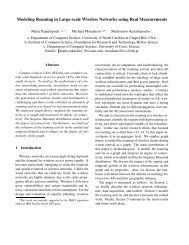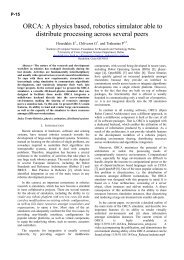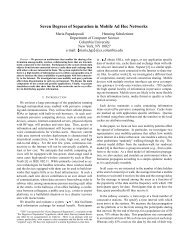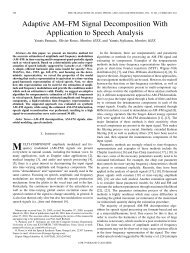Master Thesis - ICS
Master Thesis - ICS
Master Thesis - ICS
Create successful ePaper yourself
Turn your PDF publications into a flip-book with our unique Google optimized e-Paper software.
Computer Science Department<br />
Antonis Misargopoulos<br />
for the completion of a specific execution. In addition, the scheduling technique we<br />
propose is quite flexible, and newly proposed, optimized join execution algorithms can be<br />
considered. Note that for the evaluation of our scheduler, we designed and implement a<br />
scheduling simulator that takes as input an initial multi-join query and gives the bestperformance<br />
execution plan and the time that is needed for its completion.<br />
In contrast to dynamic programming, our approach has an important advantage:<br />
the relations involved in the join queries are physically stored at distributed remote<br />
resources over a Grid. The cost model we use takes advantage of Grid characteristics;<br />
such as the number of resources, the bandwidth of the links between them, etc.<br />
Specifically, the heuristics we use, comprise both the computation and the<br />
communication cost for the execution of a given query.<br />
Another advantage over the dynamic programming approach is the ability for<br />
parallel execution that is provided by the Grid facilities. It is extremely powerful because,<br />
on the Grid, we are able to separate our tasks into fragments that can be executed in<br />
parallel, saving cost in time and space. As we are going to describe in detail later, the<br />
plan graph that is constructed for each given join query using the QuPGC algorithm can<br />
be easily fragmented and executed in parallel, reducing the cost in time for the graph<br />
construction dramatically. Furthermore, using HQuPaS for the selection of the optimal<br />
query plan, the heuristics of the cost model can also be calculated in parallel. In the<br />
following sections, we describe our scheduling approach, our algorithms and our<br />
simulator in detail.<br />
34

















